Did you know?
75% of consumers would stop doing business with a retailer if they encountered a bad experience such as poor customer service.
They say knowledge is power, so training the employees in the basics and advanced knowledge of retail sales and customer service can make a difference between a sales graph crashing or going upwards with every quarter.
Whether you own an online retail store or a brick-and-mortar, it always helps to train your employees online in their trade.
Trained staff is efficient, professional, and productive. Such employees play a vital role in business growth and success by keeping your customers delighted.
In this blog post, I’ll be unboxing everything worth knowing about retail training programs. Let’s begin with the basics and then understand how to overcome the challenges of retail training.
What is Retail Sales Training?
Retail sales training is a training program for retail employees on anything related to a retail store’s sales operations. In this training, retail employees such as retail sales associates are trained on a range of skills – greeting customers, answering their questions, providing assistance, providing product information, and upselling.
The primary focus of this training is sales and customer service in the retail industry. It helps develop the necessary retail sales skills in employees so that they can build rapport with customers, keep them happy, and get repeat customers.
Components of Retail Sales Training
Retail management training programs are basically made up of three main elements – onboarding, product training, and soft skills training.
Let me elaborate.
Onboarding Training
Like other industries, onboarding in the retail sector marks the starting point of an employee’s professional journey. At this stage, the retail staff is integrated physically and emotionally into a company. The employees are trained on the brand, its beliefs, mission, and what makes it different from the rest.
During onboarding, new hires are also made familiar with the company structures, who’s who in the hierarchy, they meet with team members, and take a tour of the facility in case of a physical retailer.
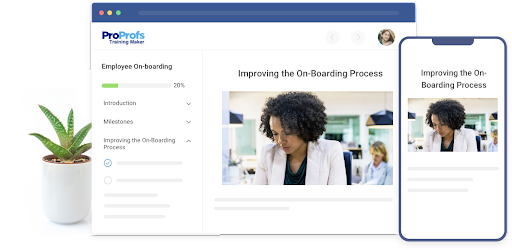
Product Training
Training on product knowledge goes beyond knowing the name of a product and where it is made. Retail employees should know who the product is designed for, and when, where, and how it should be used, and why customers should choose it over its competitors.
In short, this training equips your employees with the knowledge of a product’s features and benefits and gives them the confidence to communicate that knowledge to customers.
Soft Skills Training
Enviable product knowledge and futuristic retail technology would go down the drain if your retail sales team lacks core soft skills. Soft skills training can help your employees cultivate skills such as politeness, active listening, effective communication, and persuasiveness.
Frontline sales professionals with soft skills ensure continuous customer engagement, improved customer service, and business success.
This makes soft skills training an integral part of retail sales training programs.
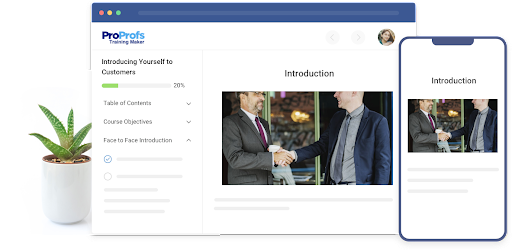
Why is Retail Sales Training Important?
Retail business thrives on positive customer experiences and sales growth over time. Both these elements are critical to business success.
A customer-centric strategy to retailing and increased sales would require adequate training of sales personnel as they act as the vital link between your product and customers. Here’s how retail strategy training helps:
- A trained sales team is well-informed about your products and services and marketing strategies. They can communicate your value proposition convincingly and increase buyer confidence, ultimately resulting in a purchase.
- Through training, you can identify your employees’ strengths and weaknesses and provide them opportunities to work on their skills gap.
- Training turns retail staff into highly skilled professionals and it influences how customers perceive your brand. Achieving customer loyalty then becomes easy.
- Retails stores manned by training staff translate into more footfall and better sales over time because the staff knows the nuances of retail strategies.
Such employees become adept at inventory management and technology management like handling point of sale (POS) systems on any device.
Watch: Nurturing Leads Training Course
Involvement of Management in Retail Sales Training
Support of higher-ups or management buy-in is necessary for the success of any training program in any industry. Retail business training is no exception.
When you involve management in retail sales training:
- employees feel motivated to learn
- employees are more inclined to cooperate
- you ensure active participation from employees
- the chances of training success multiply
Those in management roles such as General Manager, Sales Manager, and Customer Service Manager should support a retail sales training program not only financially but emotionally as well.
They should know what their staff is learning and how and what improvements the team members bring to your business.
To ensure that your management supports such training programs all the way through, you first need to make a convincing case for why such a program is necessary in the first place.
Get Free Employee Training Software — All Features, Forever.
We've helped 567 companies train 200,000+ employees. Create courses in under a minute with our AI LMS or use 200+ ready-made courses on compliance, harassment, DEI, onboarding, and more!
Challenges of Retail Sales Training & How to Overcome Them
The retail industry has its share of challenges when it comes to staff training. Let’s see a couple of them and then look at the measures you can take to overcome them.
Challenge #1: Scheduling Training
The retail sector is hectic and demanding by nature. From inventory management to merchandise displays, coming up with promos, and attending to customers’ queries and complaints, a retailer’s plate is always full.
In such a situation, taking out time to attend training can be challenging.
Solution: Online learning platforms make it easy to plan training around your employees’ busy schedules. Based on their convenience, you can configure if all chapters in a training course are available in one go or on specific dates.
Employees can learn in the flow of work and on the go with bite-sized lessons. This is when in-person, synchronous training in a traditional classroom is not feasible.
As long as learners meet deadlines, they can engage in self-paced microlearning whenever they have free time.
Challenge #2: Lack of Engagement
Holding your trainees’ attention and keeping them focused till the end is another big challenge. This is understandable since they are busy folks who put their customers first before anything else. The problem is compounded by an absence of engaging learning experiences.
Solution: What you can do with this time constraint is deliver condensed retail training modules that are nevertheless engaging. Instead of making learners go through pages of text content, you can summarize it in a 2-5 minute training video. This will make learning not only engaging but lead to increased retention.
You can also assign quizzes to increase learner engagement. Quizzes can be attempted in a short time and they are a fun way to assess.
Challenge #3: Training Seasonal Workers
During peak seasons, retailers often hire temporary workers to handle the spike in customer demands. Though these seasonal workers leave a retail store as soon as a season ends, they need some training.
If you choose the traditional classroom method, you need to repeat the same training, such as lectures every few months for different batches of seasonal employees.
Solution: When you deploy an eLearning solution, you can create a course or test once and use it several times with little or no modifications. This not only saves time and human labor but also ensures consistency in how your staff learns.
Challenge #4: Language Barriers
With the arrival of eCommerce and retail chains, retail companies are increasingly enjoying a global presence, catering to a worldwide audience. This is a good development, but there’s a catch.
Language differences breed communication barriers, which present a major challenge to trainers. People in non-native English-speaking countries aren’t comfortable with English that is used in most training programs as a medium of instruction. They prefer their native language. Otherwise, learning suffers a drawback.
Solution: A user-friendly learning management system or LMS that supports multiple world languages can be an ideal solution here. Using such LMS tools, retail sales employees can learn in a language they understand best. This will make learning more effective in the long run by removing language obstacles from the way.
How to Measure Retail Sales Training Effectiveness
Knowing how to train retail employees is not enough. Evaluating the effectiveness of retail management training online is also a must to make sure it meets your learning & development (L&D) objectives.
Only a thorough assessment will reveal if there’s any target shortfall in your retail sales training. If necessary, you can use this data to improve your training program.
While a marked improvement in employee performance and productivity clearly indicates impactful retail training, there is another proven method you should check out.
Developed by university professor Donald Kirkpatrick in the 1950s, the Kirkpatrick Model is the most widely used training program evaluation method. It uses a simple 4-level measurement system to evaluate the success of a training program.
Level 1: Reaction
It determines how training participants react to the program. Are they happy? Feeling uninterested? Or just not sure?
Level 2: Learning
It examines what the learners learned from the training. Did it improve their knowledge and skills?
Level 3: Behavior
At this level, instructors look at whether the learners apply what they learned during the training to their jobs. Did it bring any noticeable change in their behaviors?
Level 4: Results
It assesses the impact of the training on business, the return on investment. It compares the training outcomes with organizational goals.
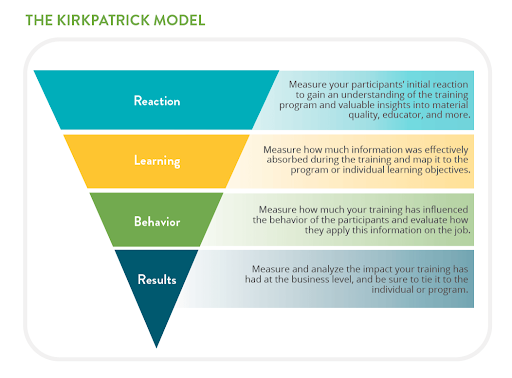
To learn more about making the training effective, let’s continue and see some of the best retail sales training tips you can implement during retail training.
Retail Staff Training Ideas
If you’re yet to deliver a retail training program, these ideas or topics will inspire you and give you a head start.
- Onboarding
An engaging onboarding training should precede all other training programs for retailers. It should give an overview of the company, its history, culture, mission, and key people. In addition, you should communicate what each employee is expected to do individually and as a team in their new job roles. The idea is to acclimatize and successfully integrate new hires into your organization.
The best way to conduct an impactful onboarding is by using a professionally designed and customizable online onboarding course.
- Skill-Based Training
This type of training is targeted at the core skills that retail staff need to perform specific roles and responsibilities. They include greeting customers, building rapport with them, preparing for sales, overcoming sales objections, and more. You can deliver them as scenario-based training with realistic and practical situations to enable faster understanding.
Here’s a course on handling sales objections that you’ll find helpful.
- Product Training
Every retail store revolves around certain products. That’s why developing product knowledge in employees is essential. They should be able to sell the right products to the right customers based on their budgets, preferences, and expectations. You should train them on your products’ key features and benefits, accessories, upselling, and the competitive landscape.
- Retail Management
Managing the day-to-day operations of a retail outlet is another area you can focus on during retail staff training. You can train your retail managers on time management, delegation, and supervision to ensure your store runs in its best capacity. Generally, this training covers warehouse management, inventory management, managing online and offline storefronts, and payments and accounting.
These management training courses can prove invaluable for this training.
- Retail Operations
Like retail management, retail operations form a major part of every retail business. It has to do with all the activities that keep a retail store functioning well. They make up the entire experience customers go through the moment they walk into your store to the time they walk out. So, retail operations training should focus on planning the layout and design of stores, inventory management, order fulfillment, sales, and customer service.
Retail Staff Training Tips
There are some established ways to plan, conduct, and conclude retail sales training. They are based on industry best practices and what most businesses think works for all. Make sure you tick all these boxes before you kick-start your training programs for best results.
? Develop a Training Curriculum
In any L&D program, a well-designed curriculum is necessary as it provides a roadmap for what you’ll cover in a course or lesson. This is true for both new hires and existing employees.
Ideally, the curriculum should include:
- Company Information
- Mission & Vision Statements
- Company Policies
- Product & Service Information
- Employee Roles & Responsibilities
- Technical Training
Along with this, you should include a training schedule timeline showing what topic and activity will be done on which date. The schedule can be based on days or weeks.
This will give a clear picture of planned learning activities, objectives, and time allocated to training administrators and learners.
? Don’t Forget to Show Appreciation
A staggering 79% of employees who quit their jobs attribute the reason to a lack of appreciation in the workplace.
A compliment from the boss, cheers from peers, a surprise party, or a champion trophy can go a long way in motivating employees. And you don’t have to wait till your employees become productive members to show appreciation. You can start it right during training.
Recognition at the right time for a job well done will motivate your employees to go the extra mile above and beyond their regular duties.
? Provide Role-Based Training
More than 80% of shoppers believe that they are more knowledgeable than retail store associates.
Hard to digest? I can understand.
A lack of formal training in retail sales employees can hurt your customers and, eventually, your business. Only intensive and role-specific training at regular intervals can help you fix it. This will check lower productivity and lower sales.
While developing a retail employee training program, make sure you do the following:
- Conduct a company-wide training needs assessment
- Put a seasoned training program manager at the helm
- Include relevant and engaging content
- Align training with business goals
- Gather feedback from stakeholders
- Conduct post-training reinforcement
? Don’t Underestimate Employee Monitoring & Performance Reviews
If you merely set learning goals without an effective performance monitoring system in place, the plan will backfire. You should closely monitor learners’ progress and performance to make sense of the training.
Based on those reviews, you may share feedback with your training participants to let them know how they are faring and if there are any improvement areas they can work on.
The reporting & analytics tool in ProProfs Training Maker can assist you in this task. You can access insightful stats on course participation, progress, engagement, strengths and weaknesses, and overall satisfaction.
With such information in hand, making data-driven decisions becomes easy.
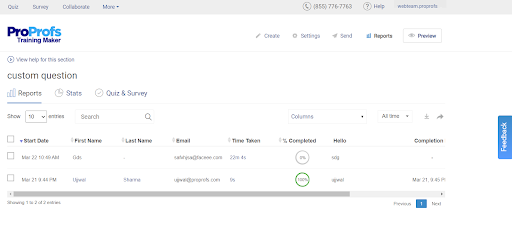
? Choose the Right Software to Deploy Retail Training
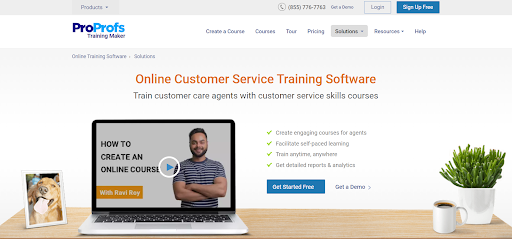
While it’s essential to develop good course content for a successful training program, it is equally important to choose the right software to deploy it. To do this, you need not choose something that offers a large number of features that may or may not be of use to you during the entire process. Here are the things to keep in mind while choosing a retail training software:
- The platform should be easy to understand and use
- It should help you develop engaging content with a mix of text, images, audios, videos and more
- Make sure it offers readymade training materials like training templates, questions etc.
- It should help you accurately evaluate course completion and performance of course takers
- The retail training solution should be compatible with various types of devices
- It should let you brand your course for personalization
Get Free Employee Training Software — All Features, Forever.
We've helped 567 companies train 200,000+ employees. Create courses in under a minute with our AI LMS or use 200+ ready-made courses on compliance, harassment, DEI, onboarding, and more!
Deliver the Best Retail Management Training!
I hope this retail training guide gives you a fair idea of everything that has to do with the best retail sales training program. If you’re yet to deploy such training, now is the right time.
Develop a team of well-groomed retail staff proficient in product knowledge and customer service. Keep your customers happy and grow your bottom line.
In this effort, ProProfs can help you. It offers not only an intuitive and robust SaaS LMS but also purpose-built retail training courses ready for deployment. Simplify, streamline, and accelerate your retail training programs for success.
 Tips
Tips
We’d love to hear your tips & suggestions on this article!
Get Free Employee Training Software — All Features, Forever.
We've helped 567 companies train 200,000+ employees. Create courses in under a minute with our AI LMS or use 200+ ready-made courses on compliance, harassment, DEI, onboarding, and more!

 We'd love your feedback!
We'd love your feedback! Thanks for your feedback!
Thanks for your feedback!







